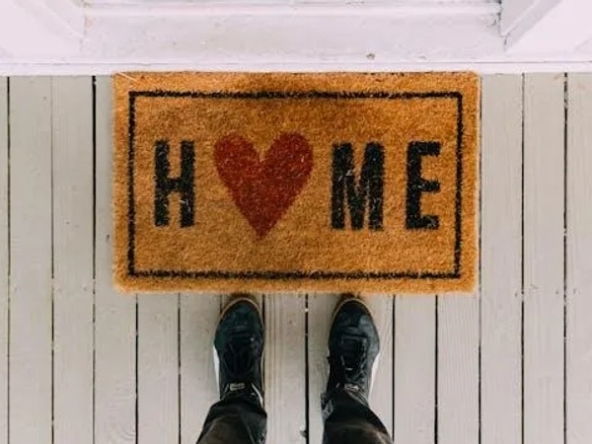The private sector has largely been responsible for the development of housing for South Africa’s growing population, but new data shows that fewer homes have been built by this sector over the past year.
Considering private developers are heavily relied upon to meet the housing needs of the country’s residents, this decline could be a concern.
South Africa’s population grew by more than 10 million from 2011 to 2022, and during this period, an additional 3,3 million homes were constructed.
New Stats SA data, however, reveals that only 18,270 new homes were constructed in the country between January and August this year, compared to 21,366 during the same period in 2022. In addition, 10,000 fewer building plans were passed from January to August 2023 compared to the same period last year, which shows that the number of new residential properties in the pipeline has also decreased.
Following the release of the 2022 Census results this month, Seeff Property Group chairman Samuel Seeff, said the South African government would need to start being more serious about providing sufficient infrastructure to accommodate the country’s growing population.
“Infrastructure development in South Africa is not only a vital component for economic growth but a necessity to accommodate the country’s growing population…However, while the growth in housing is encouraging, much of this has come from the private sector – a fact that will likely continue to be the case.”
Therefore, the decline in the number and value of buildings completed and building plans passed could be worrying.
This is how many more homes South Africa needs
To paint a picture of how many homes we need to ensure every person in the country lives in a formal dwelling, IOL has used the ‘completed buildings’ data for the January to August 2023 period and, using Census 2022 figures, compared it to the average growth in our population in an eight-month period. The average household size in the country is 3,3 people which will give an average indication of how many homes the country is short of. The average household size per province, however, varies.
SOUTH AFRICA
- Population growth from 2011 to 2022: 10,257,943
- Average population growth per year: 1,026 million
- Average population growth over eight months: 684,000 people
- Homes needed (based on average household size of 3,5): 195,429
- Residential properties built from January to August ’23: 18,270
Conclusion: South Africa is short of 177,159 formal homes.
WESTERN CAPE
- Population growth from 2011 to 2022: 1,610,285
- Average population growth per year: 161,029
- Average population growth over eight months: 107,353 people
- Homes needed (based on average household size of 3,3): 32,531
- Residential properties built from January to August ’23: 6,749
Conclusion: The Western Cape is short of 25,782 formal homes.
EASTERN CAPE
- Population growth from 2011 to 2022: 668,151
- Average population growth per year: 66,815
- Average population growth over eight months: 44,543 people
- Homes needed (based on average household size of 3,9): 11,421
- Residential properties built from January to August ’23: 1,064
Conclusion: The Eastern Cape is short of 10,357 formal homes.
NORTHERN CAPE
- Population growth from 2011 to 2022: 210,085
- Average population growth per year: 21,009
- Average population growth over eight months: 14,006 people
- Homes needed (based on average household size of 4,1): 3,416
- Residential properties built from January to August ’23: 45
Conclusion: The Northern Cape is short of 3,371 formal homes.
FREE STATE
- Population growth from 2011 to 2022: 218,822
- Average population growth per year: 21,882
- Average population growth over eight months: 14,548 people
- Homes needed (based on average household size of 3,5): 4,157
- Residential properties built from January to August ’23: 212
Conclusion: The Free State is short of 3,945 formal homes.
KWAZULU-NATAL
- Population growth from 2011 to 2022: 2,156,607
- Average population growth per year: 215,661
- Average population growth over eight months: 143,774 people
- Homes needed (based on average household size of 4,4): 32,676
- Residential properties built from January to August ’23: 1,493
Conclusion: KwaZulu-Natal is short of 31,183 formal homes.
NORTH WEST
- Population growth from 2011 to 2022: 294,595
- Average population growth per year: 29,460
- Average population growth over eight months: 19,640 people
- Homes needed (based on average household size of 3,3): 5,952
- Residential properties built from January to August ’23: 968
Conclusion: The North West is short of 4,984 formal homes.
GAUTENG
- Population growth from 2011 to 2022: 2,827,159
- Average population growth per year: 282,716
- Average population growth over eight months: 188,477 people
- Homes needed (based on average household size of 2,8): 67,313
- Residential properties built from January to August ’23: 6,718
Conclusion: Gauteng is short of 60,595 formal homes.
MPUMALANGA
- Population growth from 2011 to 2022: 1,103,385
- Average population growth per year: 110,339
- Average population growth over eight months: 73,559 people
- Homes needed (based on average household size of 3,6): 20,433
- Residential properties built from January to August ’23: 533
Conclusion: Mpumalanga is short of 19,900 formal homes.
LIMPOPO
- Population growth from 2011 to 2022: 1,167,852
- Average population growth per year: 116,785
- Average population growth over eight months: 77,857 people
- Homes needed (based on average household size of 3,6): 21,627
- Residential properties built from January to August ’23: 488
Conclusion: Limpopo is short of 21,139 formal homes.
* Note: Provincial numbers will not add up to the South African total as calculations were made using average household sizes which vary by province.
IOL Business



